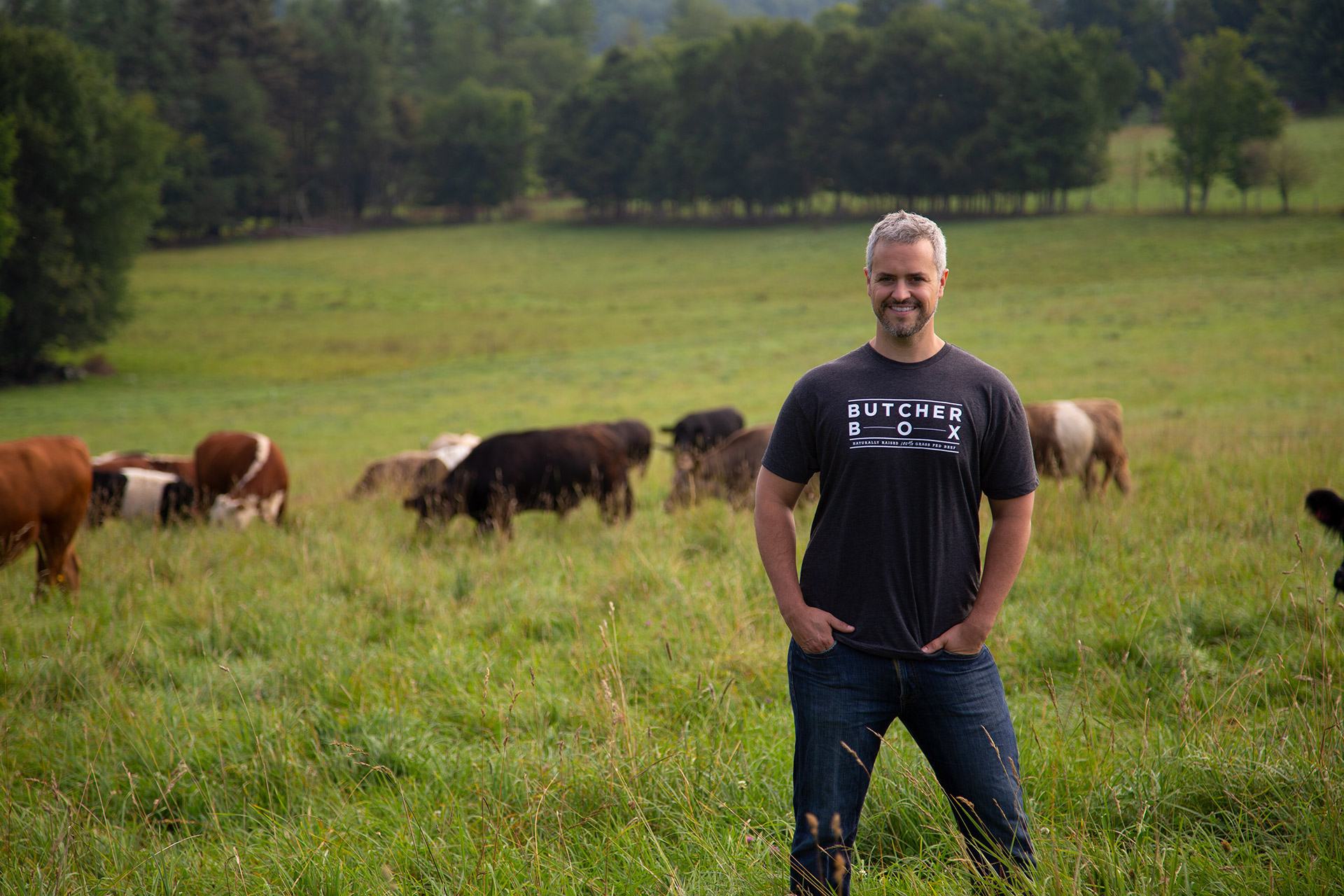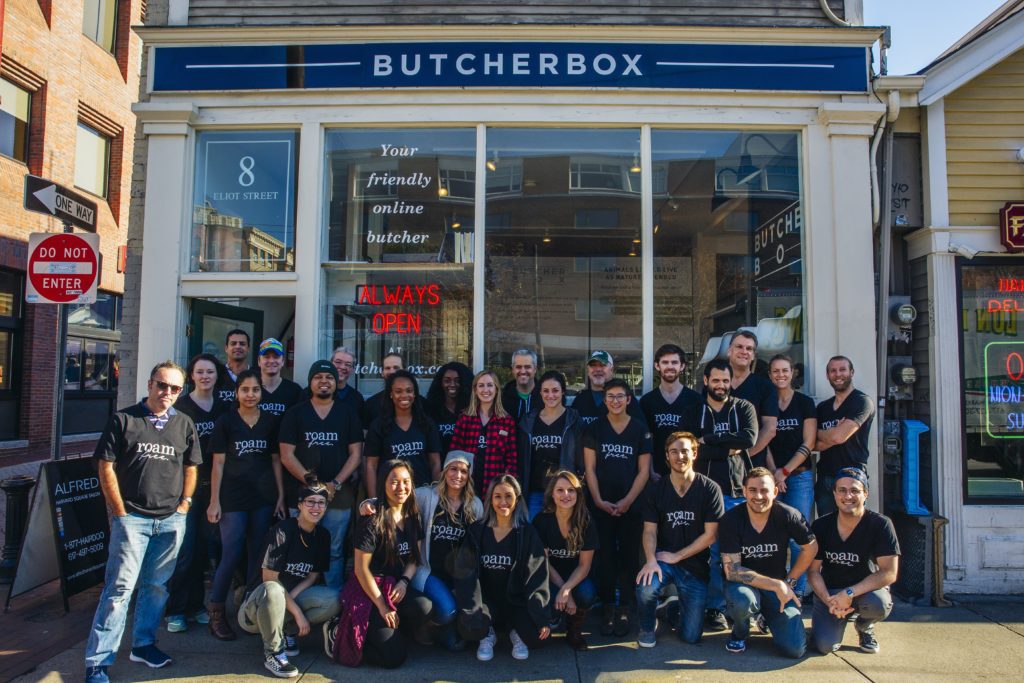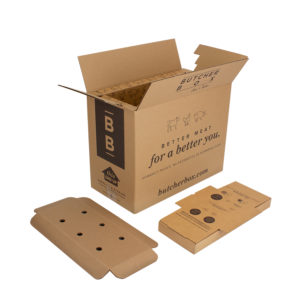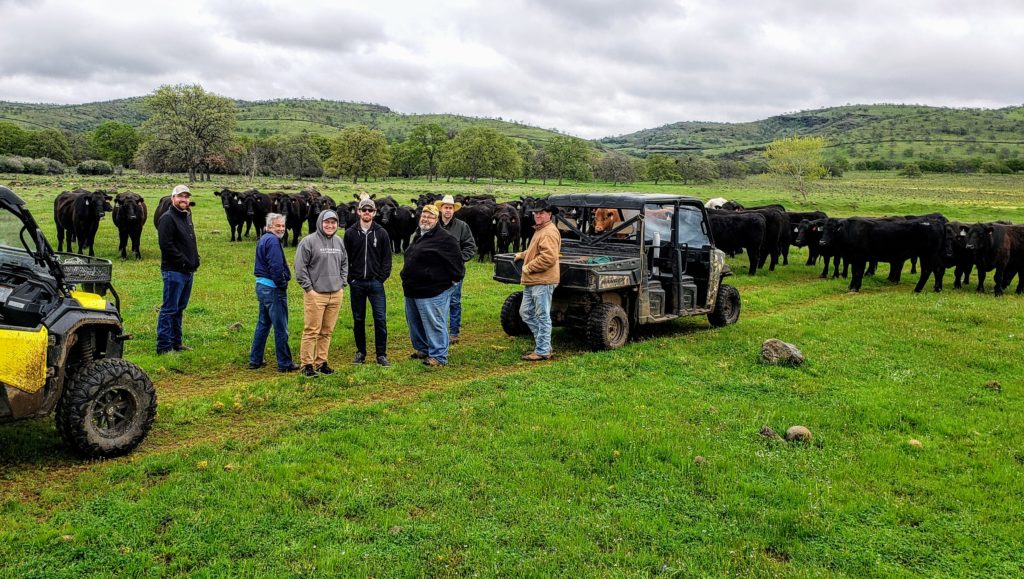
From farm to cloud to table, ButcherBox serves up a new approach to meat delivery
The path to a future of mining cloud-based data started in a decidedly low-tech way for Boston company ButcherBox after its founder, Mike Salguero, found himself in a Massachusetts parking lot buying garbage bags of beef from a local farmer.
Salguero’s wife, Karlene, has a thyroid condition, and the couple wanted to switch to an anti-inflammatory diet including lean, grass-fed meat. But they found little beyond ground beef and the occasional grass-fed steak at their local grocery stores — hence the parking-lot purchase. That was too much meat for the couple to eat, so Salguero gave some to a friend, who remarked how convenient it would be to have high-quality meat delivered at home.
“That was the initial spark of the idea for ButcherBox,” Salguero says.
The company launched in 2015, delivering boxes of frozen grass-fed beef, free-range organic chicken and heritage breed pork to subscribers, or “members,” around the United States. ButcherBox sells only meats raised without antibiotics or added hormones, ships them in 100 percent curbside-recyclable boxes made of 95 percent recycled materials, and prides itself on partnering with vendors that use sustainable, humane approaches and fair labor practices.

ButcherBox CEO and founder Mike Salguero with wife Karlene and their three daughters.
The company offers 21 cuts of meat and subscription boxes ranging from $129 to $270 monthly, depending how many pounds of meat are included.
ButcherBox tapped into a trio of hot retail trends: a demand for sustainable products, consumers’ interest in knowing more about what they’re buying, and an explosion in subscription box companies selling everything from dog toys to fitness gear, even house plants and hygge kits.
ButcherBox doesn’t release sales figures, but Salguero says the company has grown exponentially since its launch, even without seeking venture capital. Collecting and analyzing data became increasingly important as ButcherBox expanded, but the limited data the company had was mainly in Excel spreadsheets and didn’t provide the depth of information employees needed.
Customer service agents, for example, didn’t have access to warehouse data and couldn’t check to see if a member’s box had been filled or where it was. Teams in various departments were pulling data together in ad hoc ways, leading to inconsistent and imprecise insights.
“Depending on which department it was and where they got the data, everyone had their own truths about what was going on in the business,” says Kevin Hall, ButcherBox’s head of technology. “People began to realize there was a need for a single source of truth.”
Salguero puts it another way: “People became entrepreneurial and enterprising in finding ways to answer questions, but as an organization that’s pretty risky, because we don’t even know if it’s right.”

The ButcherBox team at the company’s headquarters in Cambridge, Mass.
So the company turned to Microsoft, adopting Azure as its cloud platform about a year ago. It developed a “demand plan” that uses members’ purchasing data to determine how much meat must be ordered and replenished in fulfillment centers. It enabled its approximately 70 employees to create and read dashboards using Microsoft’s Power BI data visualization tool. It interviewed more than 100 ButcherBox subscribers, then used Azure’s Databricks service to analyze their feedback and organize it into easily understandable reports in Power BI.
The interviews revealed a key insight — that the number one reason people were canceling their subscriptions wasn’t lack of freezer space, as previously thought, but value. Based on that finding, the company implemented an “add-on” program offering members perks (free bacon!) and specials on certain products, often undercutting grocery store prices on those promotional items.
More robust data also enabled the company to better determine how much dry ice is needed for each shipped box based on geographic location — a crucial calculation, since too much ice can cause leaks and too little can mean a thawed shipment.
“If someone doesn’t get his or her box or it shows up late, it’s ruined,” Salguero says. “So really understanding our data — what’s shipping, where the boxes are — became the rallying cry of the company in a big way to understand our members and build out our data infrastructure.”

The company uses fully recyclable boxes made of 95 percent recycled cardboard to ship its products.
But even the most sophisticated data can’t necessarily provide the type of information gleaned from talking with people face-to-face. Last year, Salguero embarked on what employees jokingly refer to as his “freezer road show,” visiting members’ homes, asking them about their cooking and eating habits and yes, peering into their freezers.
The exercise provided useful insights about the degree to which members rely on ButcherBox meats to feed their families, Salguero says, and showed that subscribers who most often use the food in their freezers tend to plan out their meals. That finding could help with tackling one of the biggest challenges facing a company that sells frozen meat — which is, ironically, to get members to stop using their freezers so much.
“A lot of people think of a freezer as a savings account,” Salguero says. “It’s there for a rainy day, not necessarily the place you go if you want to eat dinner tonight.”
The company is exploring how technology might be used to get more information about what customers are eating, whether through a meal-planning app or other tool, with the goal of prompting them to move food out of the deep freeze and onto the dinner table.
“All of that is a data problem at its core,” Salguero says. “We should know what members are eating and in what order. If we do our job well, we’ll know that member A is eating through X and they have a pork shoulder left over, so if we’re going to send a recipe, we should be sending one for pork shoulder.”
ButcherBox is now focusing on using data science and analytics to provide more personalized service, starting with identifying “clusters” of members who have similar likes and buying habits to determine which products and services to market to them.
“It doesn’t make sense to show someone beef if they’re really a chicken or salmon member,” Hall says. “We’re really looking to understand the data so we can serve members in a much more personalized way.”

ButcherBox offers 21 different cuts of meat and a range of custom and curated boxes.
Since data showed that members who buy certain types of boxes are more likely to leave, the company began proactively suggesting different options to those members and introduced new subscription plans with varying delivery schedules.
“We’re giving people more flexibility to switch to a plan that comes less often,” says Reba Hatcher, ButcherBox’s chief of staff. “Giving people those options has been really helpful.”
The company’s approach suits Ismael Santos, who lives in Youngsville, a small city in south-central Louisiana. Santos tried various approaches to get high-quality, sustainably raised meat free of antibiotics and added hormones — driving to a grocery store more than 50 miles away, buying at local farmers markets, splitting a quarter- or half-cow with friends. None of the options was ideal, so Santos signed up for ButcherBox almost a year ago.
“It’s hard to get that quality at a good price, and conveniently and reliably here,” he says. “You can go out and buy beef, but you’re either going to pay a ton or you’re not going to get what you’re looking for sometimes. The cost (of ButcherBox) is good compared with going to a store and buying the same quality and quantity.”
Santos also tried several meal-kit subscription services but didn’t consider them a good value and didn’t like being restricted to cooking a particular meal. With ButcherBox, he gets the main part of his meal and builds around it, picking up other ingredients at his local market as needed and sometimes adding items to his box, like ribs or breakfast sausage.
“I like that you can change it up,” he says.

The company partners with vendors that use sustainable, humane approaches and fair labor practices.
ButcherBox is still in the early stages of using Azure, but Salguero says the move has already radically changed how employees think and operate.
“It’s pretty amazing to see the cultural change because of what we’re doing with Microsoft,” he says. “It’s a totally different conversation. People used to sit around a table and say, ‘I don’t really know what’s happening.’ Now it’s like, ‘Did you pull the data for that?’ or, ‘Let’s look at this dashboard and make a decision based on what we see.’
“The culture has really moved to a reliance on the data that we have,” Salguero says. “People trust the data, and it’s only getting better and better.”
Top photo: ButcherBox CEO and founder Mike Salguero. (All photos courtesy of ButcherBox)

